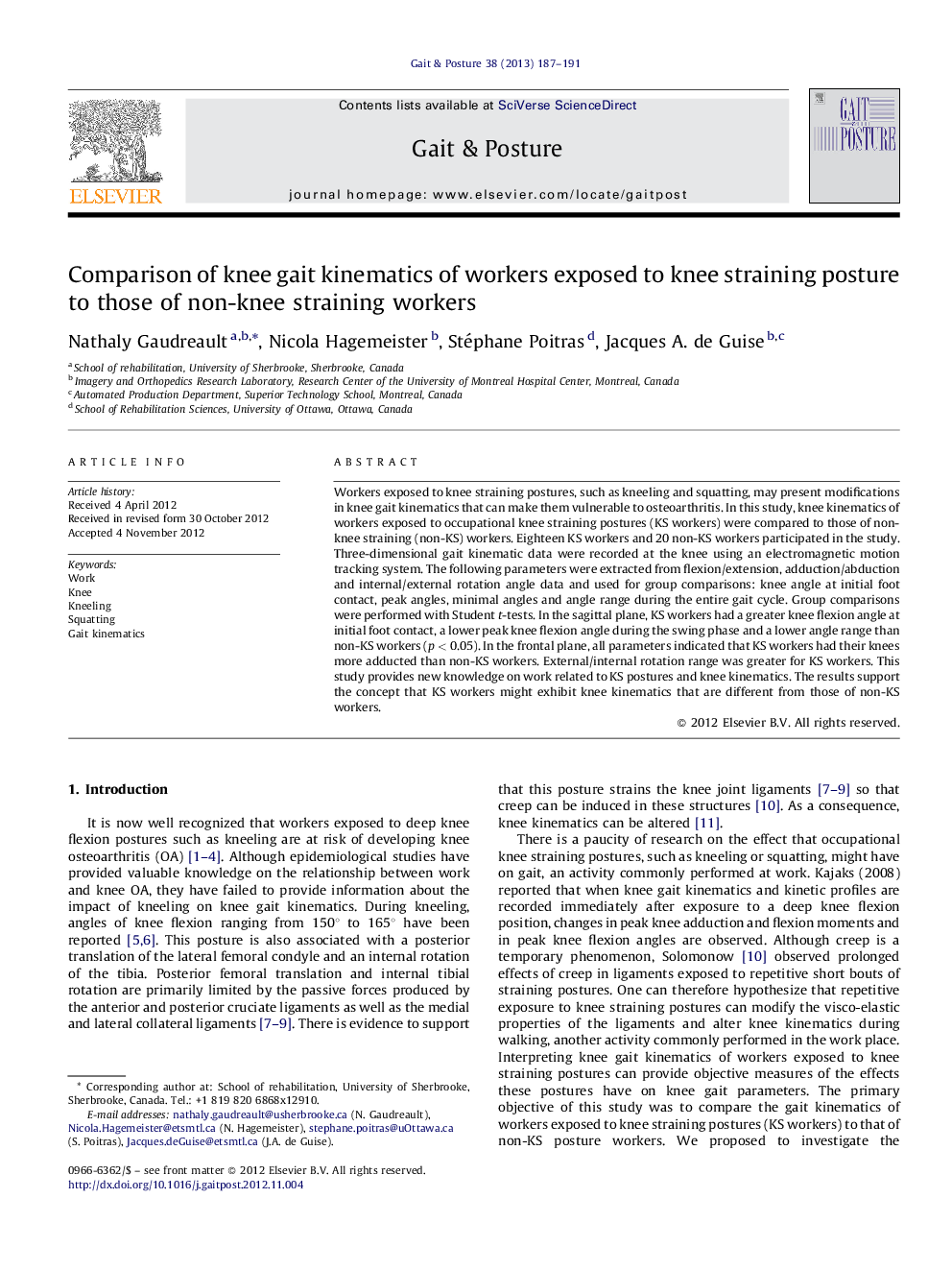| کد مقاله | کد نشریه | سال انتشار | مقاله انگلیسی | نسخه تمام متن |
|---|---|---|---|---|
| 6207315 | 1265658 | 2013 | 5 صفحه PDF | دانلود رایگان |
Workers exposed to knee straining postures, such as kneeling and squatting, may present modifications in knee gait kinematics that can make them vulnerable to osteoarthritis. In this study, knee kinematics of workers exposed to occupational knee straining postures (KS workers) were compared to those of non-knee straining (non-KS) workers. Eighteen KS workers and 20 non-KS workers participated in the study. Three-dimensional gait kinematic data were recorded at the knee using an electromagnetic motion tracking system. The following parameters were extracted from flexion/extension, adduction/abduction and internal/external rotation angle data and used for group comparisons: knee angle at initial foot contact, peak angles, minimal angles and angle range during the entire gait cycle. Group comparisons were performed with Student t-tests. In the sagittal plane, KS workers had a greater knee flexion angle at initial foot contact, a lower peak knee flexion angle during the swing phase and a lower angle range than non-KS workers (p < 0.05). In the frontal plane, all parameters indicated that KS workers had their knees more adducted than non-KS workers. External/internal rotation range was greater for KS workers. This study provides new knowledge on work related to KS postures and knee kinematics. The results support the concept that KS workers might exhibit knee kinematics that are different from those of non-KS workers.
⺠KS workers presented knee gait kinematics that were different from those of non-KS workers. ⺠KS workers presented greater adduction angle at initial foot contact and greater rotation range than non-KS workers. ⺠These findings might help understand the relationship between KS posture and knee OA.
Journal: Gait & Posture - Volume 38, Issue 2, June 2013, Pages 187-191
